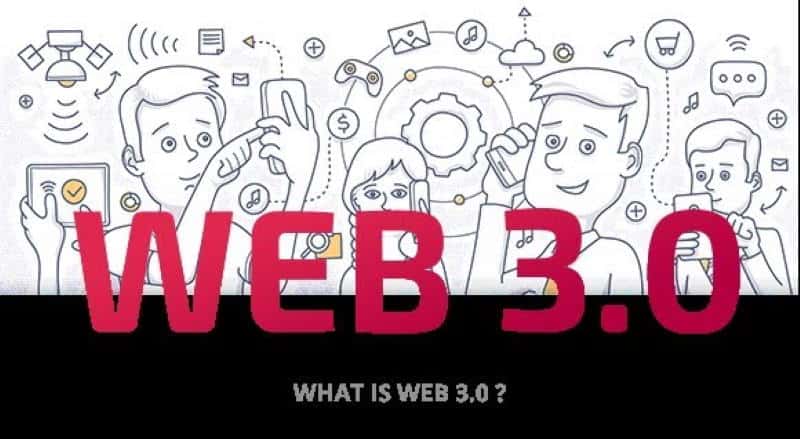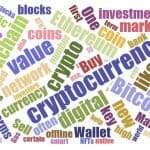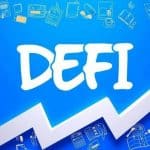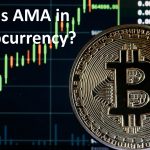I did a quick Google search “What is Web 3.0” after a few comments on previous videos said to cover it, and someone in our free discord suggested it, and I didn’t really get an answer. In fact, I got a few answers that didn’t really match up, so if you’re watching this video, get ready to learn exactly what Web 3.0 is and what it means for cryptocurrencies.
Before we officially start this article, I just want to say that there’s not some internet encyclopedia that’s verified by the institute of global technology that has a strict definition of what Web 3.0 is. So I’m going to give a rough definition of what the internet says web 1.0 is, what a lot of people say web 2.0 is, and then I’ll explain this new phenomenon that many are calling web 3.0 is.
Web 1.0
Let’s start with 1.0, an initial overview of what the internet was.
Between the years of 1991 and 2004, The internet was mostly a bunch of static pages, meaning when you loaded them, they just showed some stuff and that was it. Some called it ‘read-only’. There wasn’t any logging in or interacting with posts or viewing analytics.
Most of the early internet wasn’t even profitable by ads. It was mostly just like one big wikipedia hyperlinked together. Of course, with time slowly we made improvements and things like Flash and Javascript added many different new features. However, during that time, the users of the internet were consumers, they went to the internet to consume information.
Web 2.0
Next, we have Web 2.0, from around 2004 until now.
During this time, the web evolved a lot, but one of the biggest changes was the interactivity of the internet. This meant that not only did we get information from the pages, but the pages started getting information from us. As we viewed Facebook and Youtube and performed Google searches, these centralized companies started collecting data about us to serve us better content so that we would stay on their websites longer.
This meant more money for them, but eventually they realized they could package up all the data they had on us and sell it to advertisers. Web 2.0 is the age of targeted advertising and the lack of privacy for users. To be fair, we willingly gave up this privacy too, for cool apps like Facebook and Twitter.
In web 2.0, me and you could both view our Facebook feeds and see two very different news feeds because the page depends on who is viewing it, which is important to note for a difference in web 3 we will talk about in a minute. That is them sorting data by information you know you gave them.
If you look at the ads they show you, that is them sorting data by information you didn’t know you gave them. When you went to eat Tacos last night… they knew that. When you drop your kids off at school every day at 8am except Fridays, they know that. And there was one article that said machine learning started showing a guy some parenting ads, because they knew he was going to be a father before he did.
If it wasn’t machine learning, it was probably because his girlfriend used their public IP to do a search on her symptoms, and the machine learning algorithm probably already knew when she was ovulating, anyways. Whatever the case, one centralized company controlling this data whether we want to or not is scary. If you enjoy our videos and want to give the algorithm more data to crunch, consider clicking that like button, it helps our channel grow and makes our team feel all warm and fuzzy inside.
Web 3.0
Next up is web 3.0, what you came to this video to learn about.
Web 3.0 is the next evolution of the internet, probably utilizing blockchain technology and the tools of decentralization. In Web 2.0 you were the product as you were browsing social networks, but in web 3.0, some believe that you will be the owner of your content, the stuff that you post online. This is kinda true, so if you want a post to stay up, it’ll stay up, but if you want to take it down, they say you can control that… but not really, because as we know usually when something is on the Internet, it’s always on the Internet.
Here’s one example that’s already real. Odysee is a blockchain alternative to Youtube, where videos can be posted and creators can earn LBRY tokens as a reward for enticing viewers. The thing about Odysee though, is that they can’t really stop any video from being posted. If someone posts it, and someone else in the network wants to share it, they technically download it and then let others watch and download, kinda like a big torrent network, if you know what that is.
To expand on this, your post couldn’t get taken down because your post wouldn’t just be on 1 of Facebook’s servers… it would theoretically be on thousands of computers around the world ensuring that the blockchain social network you’re on isn’t attacked or censored. Theoretically, this means that there would be a lot of illegal or hateful things posted, but it would be in the name of freedom, of which the users of the networks could probably decide on a system to reduce that content.
In Web 3.0, experts say we will reach a point of the internet when every company is ran by a decentralized group called a DAO, which stands for Decentralized Autonomous Organization, and if you want to learn more about what those big words mean, we have a whole video on that topic and what they are used for.
However DAOs mean there are no CEOs or Presidents to impress, only shareholders and those that the shareholders decide who to hire to work on the company they own tokens of. Those with the most tokens get to vote on how the company changes, not limited by the government or some family tradition. This means no censorship of social networks like Facebook or Twitter.
Lastly, one of the biggest things in web 3.0 is that your digital identity is not 100% connected to your real world identity. This means I can view pages, download things, make purchases, and any other activity on the internet without being traced to the real me. There are many ways we can anonymize ourselves online, but bingo… I think that may be a future video idea.
So these may be long-term ideas of those who think about web 3.0, but in reality, what web 3.0 really means for us in this decade is that you can buy Amazon giftcards with metamask and pay with ethereum, or that you could anonymously leave a like on your friends posts using one of your hidden wallets, nothing life-changing all at once. It’ll likely be a series of ideas that grow together until centralized companies like Facebook and Google are disassembled by legislature while decentralized, unregulated DAOs grow to replace them.
Web 3.0 Foundation
There is a company called the “Web 3 foundation” that supports projects for increasing decentralization on the internet. Their 3 big projects are the blockchain Polkadot, Polkadot’s test chain and the web3 summit, which isn’t a good overview of what Web 3 actually is, but they also offer grants, which a lot of them have to do with supporting and using the Polkadot blockchain, so it seems to me that the Polkadot team used the ‘web 3’ name as a brand to push their own agenda, but that’s not what this channel is about.
This would be like the company Facebook buying a foundation for Web 2.0 and saying they are the one who initiated it. Facebook is a company, while Web 2.0 is an idea, the same way that Polkadot is a blockchain, and Web 3.0 is an idea, one doesn’t own the other.
I actually watched a very interesting video called “Why Web 3.0 is a scam” where Trader University talks about how Solana is also taking advantage of the novelty of “Web 3.0”. I just want you guys to understand that Web 3.0 is this big concept that is a bunch of little ideas, not one idea ran by a foundation to get you hyped up about the next step of the internet.
Thanks for reading our blog, we hope you enjoyed it, we really hope you learned something, and most of all we hope to see you in our next article!





